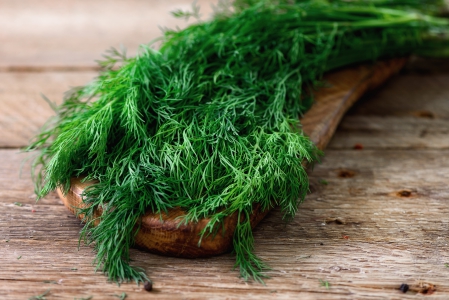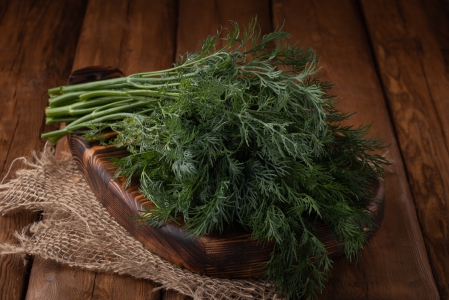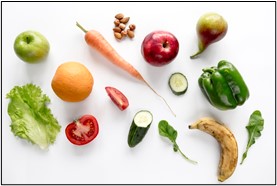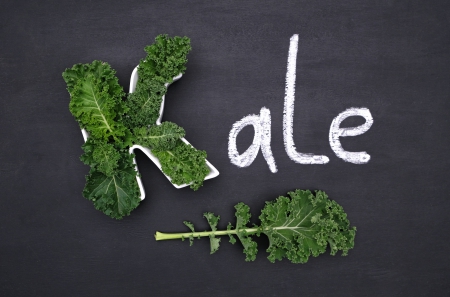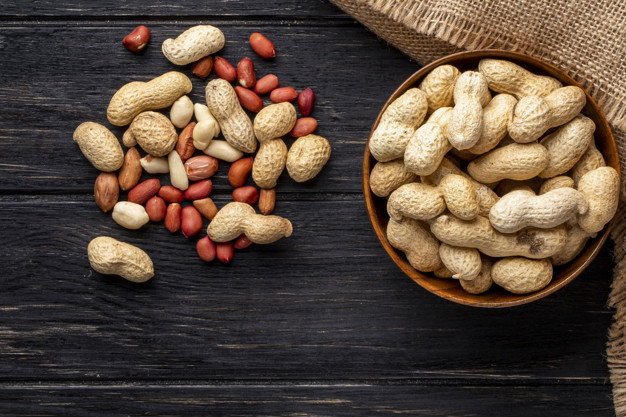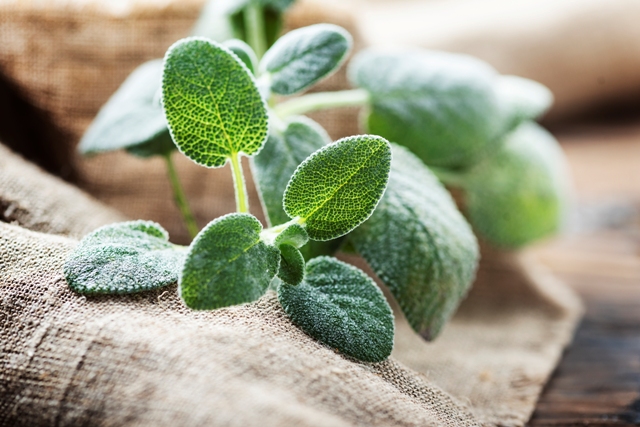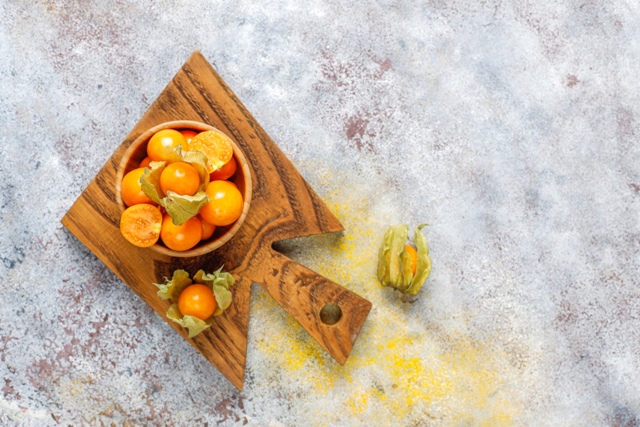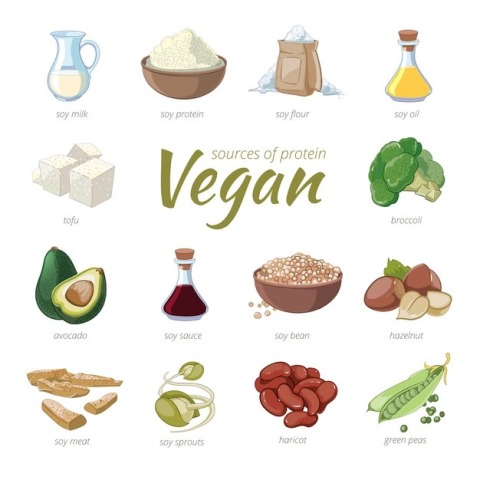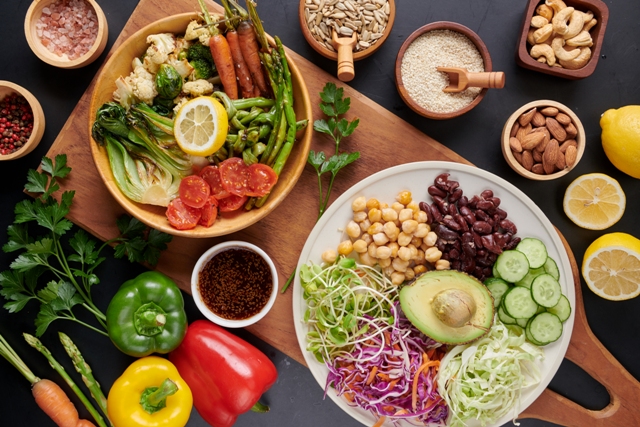Dill is an important plant belongs to celery family and generally used as culinary spice. Fresh and dried leaves of dill called dill weed and its seeds are widely used in central Asia and Europe as herb. Dill contains several essential nutrients that help to promote health and immunological responses of the body.
Nutritional profile
- Dill contains very less amount of carbohydrates and contains too some extent of dietary fibre
- It contains negligible amount of fats and proteins
- Whereas it contains some vitamins like Vitamin A, Vitamin C, Vitamin B complex especially folic acid
- It also contains various trace elements like calcium, phosphorus, sodium, potassium, iron, magnesium, zinc and manganese
- The essential oil of dill contains flavonoids and monoterpenes (especially anethofuran, limonene and carvone) which have antioxidant, anti-inflammatory, anticarcinogenic and antimicrobial properties
- It also contains some other biologically active compounds such as terpinene, pinene, phellandrene, dill ether and myrcene
Health benefits
Antioxidant property
- Dill helps to protect the body from oxidative damages caused by free radicals
- Flavonoids and terpenoids components of dill significantly help to reduce oxidative stress and inflammation of liver, heart, kidney and brain, which help to prevent respective organ disorders. Especially flavonoids help to reduces the risk of developing strokes, myocardial infractions and several type of cancers
- Another important component of dill is tannin, which is mainly responsible for its bitter taste and it also acts as strong antioxidant and antimicrobial substance that protects the body by preventing oxidation and microbial infestation

Antimicrobial property
- The essential oil of dill has potent antimicrobial activities, which helps to inhibit the growth and reproduction of microbes within host
- It also helps to reduce the number of living microbial cell within host at an extent that does not harmful for the body
- It mainly helps to prevent the growth of Campylobacter sp (gram negative bacteria) by impairing their cell membrane and helps to prevent the prevalence of food borne diseases
- It is better to consume dills to avoid the exposure of infectious diseases
Anti-carcinogenic property
- The monoterpenes components are considered as the main anti-carcinogenic components of dill, (mainly found in its essential oil), which are responsible for reducing the risk of developing carcinoma
- Dill helps to prevent the growth of malignant cells by regulating cell apoptosis and helps to prevent their metastasis
- Dill especially helps to prevent the susceptibility of colon, lungs and breast cancers
Role on cardiovascular system
- As mentioned above the flavonoid components of dill have great antioxidant and anti-inflammatory effects. They help to prevent oxidative damages of heart and reduces the rate of cardiac morbidity and mortality
- It also helps to inhibit harmful inflammatory events of heart (such as thrombosis, platelet aggregation and ischemic heart disease) and hence helps to prevent the prevalence of cardiovascular diseases
- It has seen that consumption of dill extract is associated with reducing the concentration of triglycerise, LDL and VLDL, which help to prevent the occurrence of atherosclerosis and hence promotes cardiac health

Role on preventing diabetes
- Consumption of dill helps to prevent diabetes mellitus (especially type 2)
- It helps to reduce free sugar concentration within blood by enhancing the activity of insulin hormone
- It has seen that dill significantly helps to reduce the fasting blood sugar level
Role on regulating pain
- Dill is considered as an important natural source of pain reliever, which helps to reduce pain by preventing inflammation
- It has seen that consumption of dill is associated with reducing menstrual cramp and helps in proper running of menstrual cycle by stimulating the secretion of hormones related with menstrual cycle
- It also helps to reduce labor pain. Consumption of dill especially its seed, at the early stage of labor may help to shorten the labor pain
- Consumption of dill is beneficial for preventing the pain of arthritis by preventing joint swelling
Role on promoting bone health

- It has seen that consumption of dill is beneficial for promoting bone health as it contains significant amount of calcium
- It also helps to enhance bone mineral density
- It helps to prevent bone losses and helps to reduce the prevalence of bone disorders like osteoporosis, osteomalacia
- It is better to be consumed for repairing bone injuries
Role on oral health
- Essential oil of dill has potential germicidal, disinfectant and antimicrobial property. It helps to inhibit oral microbial infection and hence prevents tooth and gum disorders
- The seeds and flowers of dill also act as natural mouth freshener that help to freshen the breath
Medicinal usage
Dill has its traditional usages in folk medicine for centuries. Consumption of dill is associated with preventing following chronic diseases –
Gastrointestinal disorders
- Consumption of dill helps to prevent flatulence by inhibiting gas formation within body
- It also helps to eliminate the gas from body by pushing it downward through the gastrointestinal tract
- It is also related with promoting digestion
- The flavonoids and monoterpenes components of dill have antimicrobial activities and help to prevent microbial infestation of digestive tract and leads to inhibit diarrhea

Respiratory disorders
- Flavonoid especially kaempferol and monoterpenes components of dill present in its essential oil are responsible for providing antihistaminic effect
- Dill helps to prevent congestion in respiratory system and reduces the prevalence of respiratory disorders, especially bronchitis
Insomnia
- Dill has been traditionally used for preventing insomnia
- It has seen that the flavonoids and B vitamins components of dill help to activate some hormones and enzymes that provide a hypotonic and calming effect hence helps individual to have a good sleep
Hiccups
- Hiccups is a chronic disease characterized by involuntary contraction of diaphragm and its upward movement (repeatedly) through the food pipe
- It is mainly caused by trapping of gas, nervous malfunctioning, hypersensitivity and allergies
- Dill helps to reduce this complication by reducing gas formation and expulsion of gases as it has strong carminative activity
Liver disorders
- It has seen that consumption of dill is associated with promoting liver health and function
- It helps to prevent fatty infiltration of liver by dropping fat deposition as it helps to reduce the concentration of fatty acid and cholesterol (bad) within body
- It also helps to prevent the prevalence of gallstone formation and helps to enhance the growth as well as functions of gallbladder

It has been used for centuries to treat normal cold, coughing and fever
It has also seen that consumption of dill is associated with enhancing renal functions
It helps to increase urination and hence helps to eliminate toxins from body
It also helps to reduce the susceptibility of developing disorders in urinary tract
It has been used to treat sore mouth and throat infection
General considerations of using dill
- Pregnant women should avoid dill as it can start menstruation and leads to miscarriages
- Lactating women should also avoid dill consumption
- As dill extract helps to reduce blood sugar concentration so it is better for diabetic patients (especially, who take hypoglycemic drugs or insulin) to monitor their blood sugar level while consuming dill otherwise it would cause severe hypoglycemia
- It is better to avoid dill consumption before and after two weeks of surgery
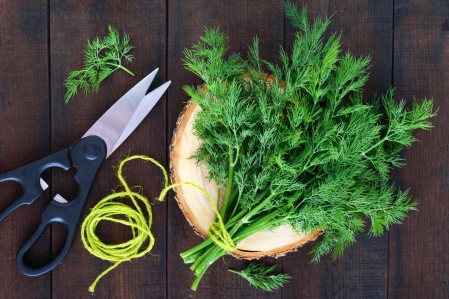
Source:
Biesiada, A., Kędra, K., Godlewska, K., Szumny, A. and Nawirska-Olszańska, A., 2019. Nutritional Value of Garden Dill (Anethum graveolens L.), Depending on Genotype. Notulae Botanicae Horti Agrobotanici Cluj-Napoca, 47(3), pp.784-791.
Chahal, K.K., Monika, A.K., Bhardwaj, U. and Kaur, R., 2017. Chemistry and biological activities of Anethum graveolens L.(dill) essential oil: A review. J Pharmacogn Phytochem, 6(2), pp.295-306.
Hojjati, M., 2017. Chemical constituents and antibacterial activity of dill (Anethum graveolens) essential oil. In 15th ASEAN Conference on Food Science and Technology, Novemver (pp. 14-17).
Meena, S.S., Lal, G., Dubey, P.N. and Meena, M.D., 2019. Medicinal and therapeutic uses of Dill (Anethum graveolens L.)-A review.
Mohammed, F.A., Elkady, A.I., Syed, F.Q., Mirza, M.B., Hakeem, K.R. and Alkarim, S., 2018. Anethum graveolens (dill)–A medicinal herb induces apoptosis and cell cycle arrest in HepG2 cell line. Journal of ethnopharmacology, 219, pp.15-22.
Mohammed, F.A., Razvi, S.S., Abdul, W.M., Mohammed, K., Hakeem, K.R., Banaganapalli, B., Shaik, N.A. and Elkady, A.I., 2019. Protective role of medicinal herb anethum graveolens (Dill) against various human diseases and metabolic disorders. In Plant and Human Health, Volume 3 (pp. 181-194). Springer, Cham.
Mohsin, M.M., Hanif, M.A., Ayub, M.A., Bhatti, I.A. and Jilani, M.I., 2020. Dill. In Medicinal Plants of South Asia (pp. 231-239). Elsevier.
Mutlu-Ingok, A. and Karbancioglu-Guler, F., 2017. Cardamom, Cumin, and Dill Weed Essential Oils: Chemical Compositions, Antimicrobial Activities, and Mechanisms of Action against Campylobacter spp. Molecules, 22(7), p.1191.
